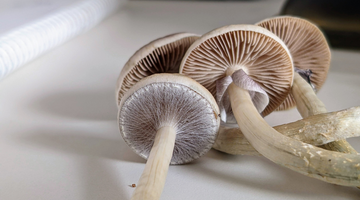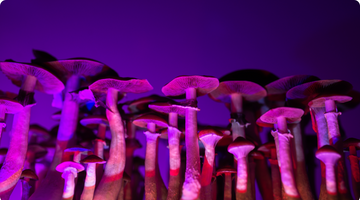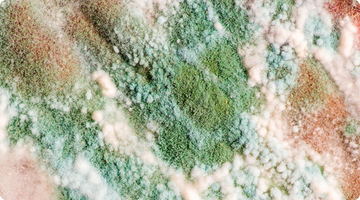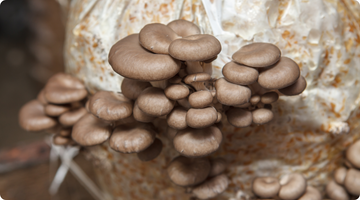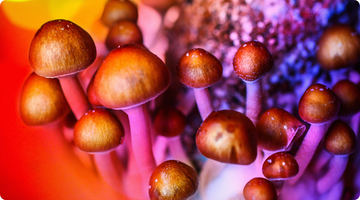Introduction:
Mushrooms, those enigmatic organisms that spring up seemingly overnight, hold a world of scientific intrigue beneath their caps. Far more than just a culinary delight, mushrooms are a marvel of nature's design, showcasing a complex lifecycle and an intricate relationship with their environment. This blog post invites you on a scientific expedition to explore the biology and lifecycle of mushrooms, along with the environmental factors that are crucial to their development. Prepare to embark on a journey into the heart of mushroom science.
The Biology of Mushrooms: A Closer Look
Mushrooms, or fungi, are a kingdom of life entirely separate from plants and animals, boasting their unique characteristics and biological processes. At the core of mushroom growth is the mycelium, a vast, web-like network of hyphae that forms the organism's true body. The mycelium remains hidden from view, spreading extensively beneath the soil or within decomposing material, and plays a critical role in nutrient absorption and decomposition.
The Mushroom Lifecycle: A Fascinating Journey
The lifecycle of a mushroom is a captivating tale of growth and transformation. It begins with spores, microscopic units of reproduction that are released from the parent mushroom. These spores germinate and develop into hyphae, thread-like structures that intertwine to form the mycelium. Under favorable conditions, the mycelium will produce a fruiting body, what we recognize as the mushroom, which emerges to disseminate spores and start the cycle anew.
Environmental Factors: The Key to Mushroom Development
The growth and development of mushrooms are significantly influenced by environmental conditions, with temperature, humidity, and substrate quality being paramount. Mushrooms thrive in moist, humid environments, as these conditions support the mycelium's expansion and the eventual formation of fruiting bodies. The substrate, or the material upon which mushrooms grow, provides essential nutrients and varies widely depending on the mushroom species, from decaying wood to rich soil.
Light and Mushrooms: Dispelling Common Myths
Contrary to popular belief, light plays a crucial role in mushroom development, albeit not in the conventional sense. While mushrooms do not photosynthesize, light acts as a crucial signal for many species, triggering the formation of fruiting bodies. The intensity and duration of light exposure can significantly affect the growth patterns and yield of mushrooms.
The Role of CO2: A Delicate Balance
Carbon dioxide levels in the environment also play a critical role in mushroom growth. High concentrations of CO2 can suppress the formation of fruiting bodies, while lower levels can stimulate their development. This delicate balance is crucial for cultivators to manage, especially in controlled growing environments.
Conclusion: Embracing the Complexity of Mushroom Growth
The science behind mushroom growth reveals a world of complexity and sophistication, highlighting the delicate interplay between biology, environmental factors, and the lifecycle of these fascinating organisms. By understanding the scientific principles that underpin mushroom development, we can appreciate not only their ecological significance but also their value in culinary, medicinal, and environmental contexts.
Frequently Asked Questions
Q: Can mushrooms grow in complete darkness? A: While some mushrooms can grow in minimal light, most require some degree of light to trigger the development of fruiting bodies.
Q: What is the fastest-growing mushroom species? A: The oyster mushroom is among the fastest-growing, often fruiting within just a few weeks of inoculation.
Q: How do mushrooms contribute to the ecosystem? A: Mushrooms play a crucial role in decomposing organic matter, recycling nutrients back into the ecosystem, and supporting soil health.
Q: Can mushrooms be grown year-round? A: In controlled environments, mushrooms can indeed be cultivated year-round, with conditions adjusted to meet the specific requirements of each species.
This exploration into the science of mushroom growth unveils the intricate and fascinating world beneath the surface of these humble organisms. As we delve deeper into their biology and lifecycle, we uncover the vital role mushrooms play in our ecosystems and the myriad factors that influence their development. Let this knowledge inspire a deeper appreciation and curiosity for the scientific marvels that mushrooms truly are.

